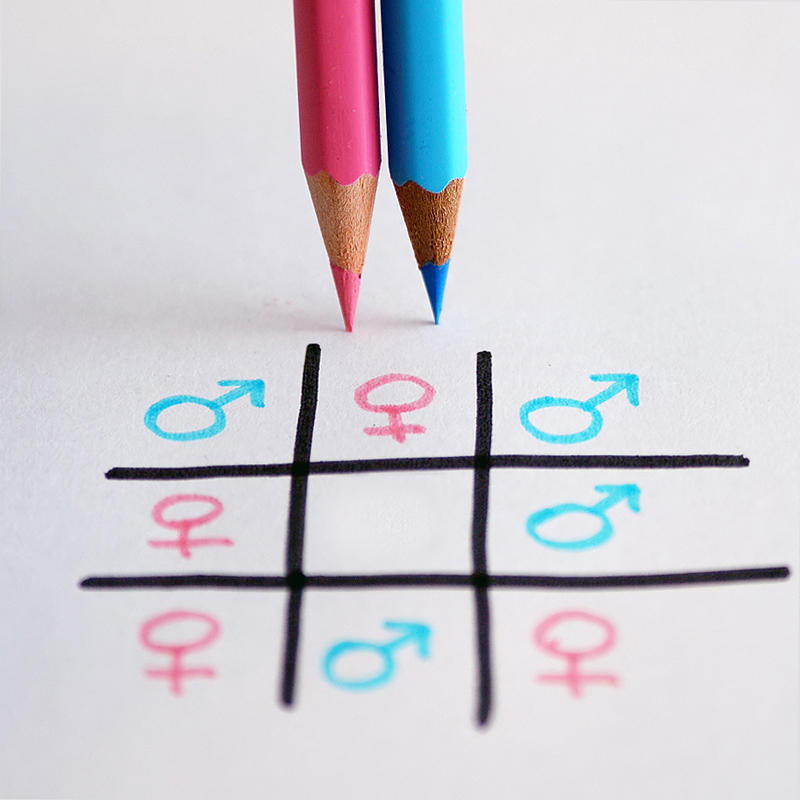Talking about women, activists, in BH is talking about women whose names are only partly known to the public, whose activities are mostly invisible for the media, and whose contributions are often collected unofficially, and even more often forgotten in this dynamic and very complex civil scene.
Female activists are passionate, caring, articulate, emotional, enlightened, extroverted and hardworking. As claimed by Alberto Melucci, a civil society theoretician, they anticipate things.
They have outlined the BH civil society through processes of enlightenment and self-enlightenment, as well as through their way of defining needs, problems and terms. Although there are no official gender-based statistics on engagement of women participating in civic initiatives, from experience we know that number of women participating in civic initiatives is significantly higher than the number of men, and vice-versa when it comes to their participation in official political scene.
Women’s participation in civic initiatives is not seen as a theoretical-conceptual value that provides knowledge of the following terms: „civil society“, “civil politics“and „civic initiative“. Instead, women and their activities are seen as a women’s community, that is, everyday circle of worries and struggle.
Without knowing the meaning of the term „civic engagement“, but in accordance with their own perception of its vales, female activists have stood up for their own positions and roles in the civic engagement, using all of their capacities in female, feminist, peaceful, environmental, human rights, micro-credit, health, medical treatment and other types of organizations.
The biggest part of these women is active in different civic initiatives simultaneously, and for a long time period, whereby they often perform roles of active members, and leaders of initiatives, that is, projects.
Volume and scope of their activities go way beyond the territory where the organization is head-quartered. Their activities encompass not only entire BIH territory, but the region too.
Sustainability and long-term perspective for significant number of women’s groups was secured through participation and responsibility of women, especially at the grass roots level. Democratization process in BIH attracted attention of many international organizations that supported local female initiatives and their activities in development of a democratic nation. Women’s groups were the safest environment for development of female capacities, whereas the women, encouraged by knew knowledge, and free from their husbands’, fathers’ and employers’ control have moved from the state of passive assimilation to the state of active struggle. Participating in struggle against the war, violence and discrimination, women learnt how to think not only individually, but at the level of a social movement.
Very often, these organizations have access to detailed information on life at the local level, and on the needs of local men and women. Thus, they can be used as a connection between local communities and the key decision-makers. Involving women and civic initiative in the process of revitalization of democracy has been an essential part of taking the initiative at the local level.
A clear contribution of civic engagement of women is visible in the area of female human rights, and gender and gender equality issues in public policies.
Female human rights are called for in cases of oppression or in social processes in which subordination of women caused by their gender is present.
Women in BIH used to have, and still have, the leading role in the process of development of consciousness on importance of advocating human rights and civic freedom. They are trying to overcome their impotence in everyday female problems – violence, rape, poverty, unemployment, lack of education – with a view of achieving political power to deal with different forms of inequality.
Sometimes it seems that the women are dreaming about female rights, while being exposed to injustice, violence, and marginalization. Is emotional and physical burden that women carry recognized in our culture, and is it valued? I am afraid that the answer to these question is no. Regardless of how many walls of silence are broken, how much past is investigated, and hidden truths and cases of female oppression are revealed, it is very difficult for female human rights to pass from a sensation into a social reality.
Despite the human rights equality’s legal structure, they are not always uniformly implemented. Even within the human right’s framework, women very often have a second-rate, or “special interest” status due to combination of social, economic and political interests, as well as tradition and preconceptions. Solutions for new problems in the society was found in change of role and position of women in BH society.
Due to a political scene burdened with the heritage of the past, much more women’s and women’s group’s effort (than the women’s participation in the post-war democratic elections) was needed to infiltrate the public requirement of equal possibilities for women (in education, employment, equal salaries and participation in politics) into the patriarchal and traditional autism. The women’s right to chose and be chosen was not the key issue any more. A new issue, that of public presentation of women as an interest group in BH society appeared.
Female participation in political parties and entry of some of them into the political arena is not enough to establish a legitimacy and representativenes of political institutions. Public requirement for a bigger number of women in politics is based on the classical principles: democratic justice principle, the use of resources principle and the principle of representation of women’s interests; and it has converted women in objects of political power, and not leaders of political changes. More effort and will, especially in the wider community, is necessary for that.
Balanced participation, or parity of participation of women in political life is one of the rare issues in BH public life generating clear consensus in politics and public opinion in general. At the same time, when it comes to this, it is difficult to see understanding and sincere engagement of all subjects involved. One issue presents an obstacle for the other. These two issues have different motivations and consequences on female presence in public life. Social capacities for a more just and better functioning of political institutions are weak and poorly coordinated. Although BIH has approved the institutional framework for promoting and supervising the gender equality and gender-aware policies (Gender Centers of FBiH and RS, Agency for Gender Equality, Gender Equality Committees from state to local level, Law on Gender Equality), in which the male and female participation in the decision-making process is a practice, and not only complying with the formalities, transformation of institutions and legislation did not change the attitudes, values, political culture and awareness related to the position of women in the region.
Participation of women in political parties spans between 30 to 40%, whereas their participation in the parties’ organs (main boards and presidency) is at the level of 20 to 40%. Almost all political parties have introduced certain mechanisms (quotas and female forums) to ensure female participation in politics, but have not changed their internal procedures. Political parties mostly act without limitations and foreign influence. Although political parties do not force membership, both women and men believe that being a member of a leading party anywhere in the country is the safest way to get and keep employment in public institutions/companies, especially, to get and keep positions in management boards of profitable, public companies. Ruling parties do not entirely exclude opposition parties from participation in political life. Membership in big, well financed parties provides formal advantages while, when deciding on appointments for numerous key governmental position, parties often do not take into consideration non-party committed persons.
Discrimination of women is clear in: names of positions in legislative, executive and court government (male gender words are used); (non)running of women to certain position within a party, composing of mixed lists of candidates (Article 4. 19. of the BIH Election Law); (non)running of women for most responsible positions in the legislative and executive government and diplomacy; unequal treatment of women in pre-election presentation of political parties’ programs; unequal treatment of women in proposing and electing legislative government organs at all governmental levels (important committees / boards); unequal treatment of women when proposing and electing executive government organs; unequal treatment of women when proposing and appointing members of executive organs; non-acceptance of proposals, measures, programs, projects, etc, for balanced female and male participation; and implementation of temporary measures through which support to women is provided only to achieve a formal gender equality.
Analysis of results of elections held from 1996 to 2010 shows that in the last few years BIH has seen positive changes when it comes to presence of women in political institutions. Following September 12 and 13, 1998 Parliamentary Elections, the number of women in Parliamentary Assembly increased dramatically from 2.3% to 30.2%, making BIH the leading country in the region when it comes to this. In 1998 elections, closed lists and obligation of composing mixed candidate lists enabled election of a bigger number of women for legislative organs at all levels of the government. The following elections did not see continuation of this trend, although in 2003, an institutional framework for monitoring if balanced participation, or parity of participation of women and men in the decision-making processes was established. We did not manage to keep the same number of women in the Parliament. At all levels, less women were elected than men.
The number of women in executive government, as well as in management boards at the state, entities and cantons level is almost negligible. Although members of these organs are more than 75% men, we could say that departure from the stereotype female roles was achieved – women occupied roles of a president of an entity, that is, a vice-president, minster, that is, assistant minister of treasury, foreign trade, justice, defense.
Participation of women at the local government level is also inadequate. Although, in average, more than 35% women run for municipal elections, only 18% of them get to be elected. Last municipal elections held, those from 2008, showed decrease in number of women in municipality councils, that is, municipality assemblies. Could we say that it was a success to have 3, that is, 4 female mayors in local elections in 2004 and 2008? I am not sure about it.
However, we could say that the number of women elected at 2008 local elections (within special national minorities’ lists) was a success. The women got 8 positions.
The political elite’s lack of interest for obvious connection between gender equality and democracy undermined the legitimacy of public decision-making. Although BH political scene is governed by men, it is an undeniable fact that women are the majority of the electoral body -above 50%.
Political reality supported by male hegemonism converted parliamentary democracy into process of „irreconcilable confrontation“ ( Mladineo, 2004) between women and men. Political pluralism that does not include both genders in the decision-making process is a permanent threat to development of a stable society. There is not even one political and normative regulations’ mechanism that would secure a bigger participation of women in the political arena.
Aware of their identities and positions, women emphasize the importance of education and economic independence. Trends in education are a proof that the overall situation, when it comes to education of women in BIH, has improved. Nevertheless, women are still less educated than men.
The number of girls from rural areas that go through the secondary school education is lower than the number of girls from urban areas due to various reasons. They are, primarily, poverty, gender stereotypes and gender segregation.
Men and women in BIH do not have the same conditions to build a career.
There are no elements of discrimination in the access to professional development, but the entire system is fragmented and is not based on analyses of demands and interests. Contents of BIH textbooks are colorful, and they are rich in gender preconceptions and stereotypes, different “truths” and national “facts”.
Analysis of participation of women in certain economic and non-economic activities shows that majority of employees in health system, administration, education, court system and culture are women..
Percentage of women in non-economic activities is way higher than in economic ones, and that points to clear division between, the so called, male and female jobs.
Women usually do not own land, nor manage family estates. There are no gender specific data on participation of women in economy management structures, and only a small number of women holds leading positions in (public) companies.
It is more difficult for a woman to have access to a loan, although generally speaking, experiences with female borrowers are mostly positive.
Female unemployment in not considered a priority on the political agenda. Women are less paid than men, and more affected by poverty because they get fired easily, and for them it is more difficult to get a loan and a new job.
Women usually open small shops, or work as street sellers where they are exposed to unloyal competition and crime. Discrimination against women performed by private sector employers is more and common.
The position of women depends on social and economic problems in the society, and their economic position is very often more difficult to that of men.
In BH society, violence against women is manifested in many different forms and ways, including violence at home, rape and other forms of sexual assaults. The factors that contribute to violence at home are, among other, difficulties caused by a transition that converts the woman in the head of the family because the man is job-deprived and dissatisfied with the existing situation. Forced migrations and a big number of displaced persons result in lack of community that could provide a network that protects families from this kind of pressures. Also, serious post-traumatic stress influences on those who fought in the war, but also on those who stayed out of the front line. Huge plundering and devastations, as well as numerous rapes have caused serious post-war traumas in women. The government is yet to understand the gravity of the problem of violence at home women are exposed to, and undertake the necessary measures to solve it. Among other things, a widespread use of alcohol is one of serious consequences that contributes to increase in violence at home. Women’s unwillingness to denounce violence at home enables the authorities to neglect seriousness of this problem, and not to give it the importance it deserves. Another serious problem is the level of female acceptance of violence at home, and it complicates the systematic fight against violence.
Namely, violence against women is the main social mechanism of control over women which helps produce, reproduce and maintain the state of oppression, discrimination and unequal position of women in society. Very often, violence against women is treated as a marginal, private problem even by institutions and persons that is the least expected from.
In this period we have all preconditions necessary for prevention of family violence, because the term” violence” has been introduced in the most important BH laws, especially in the Family Law and Family Violence Protection Act, that define obligations and regulates steps taken by legal entities with public authority against violence and violence perpetrators.
Social service centers, health institutions, and the police have specialized departments trained for prevention of family violence.
Institutional and NGO-s in their joint activities spread opinions that will make the community more sensitive to violence issue, and at the same time, more prepared to solve this problem through legal regulative standards and mechanisms.
Author: Nuna Zvizdić, Director of “Žene Ženama”








